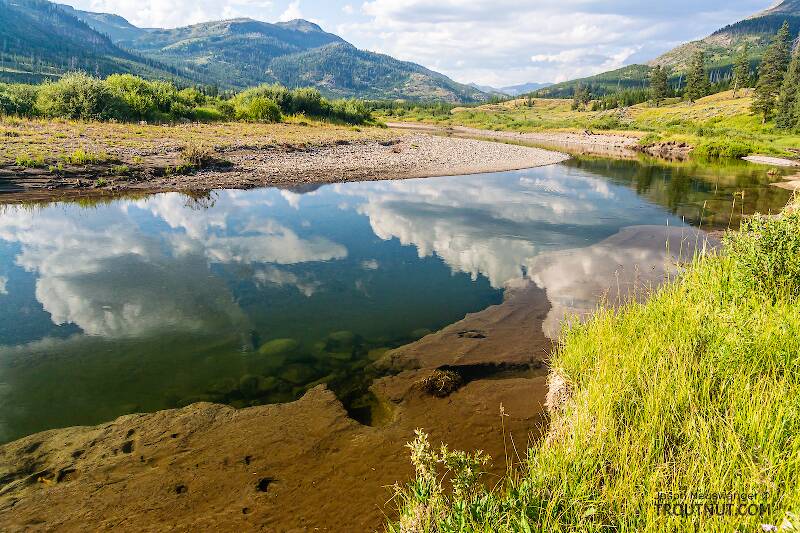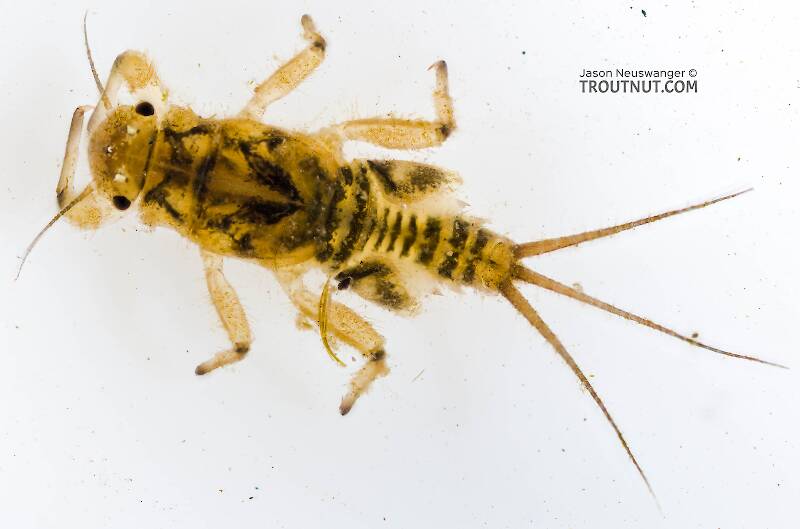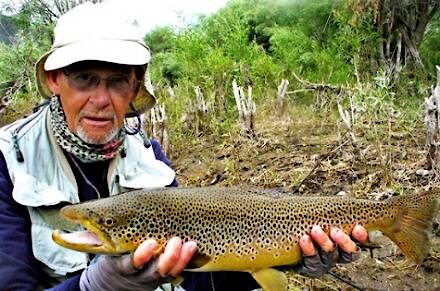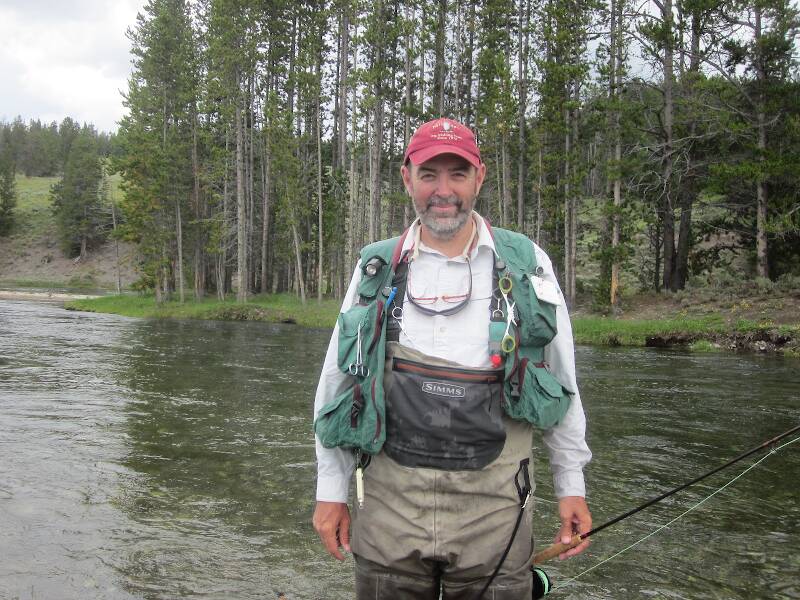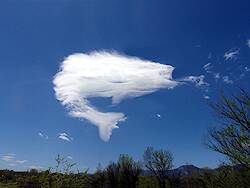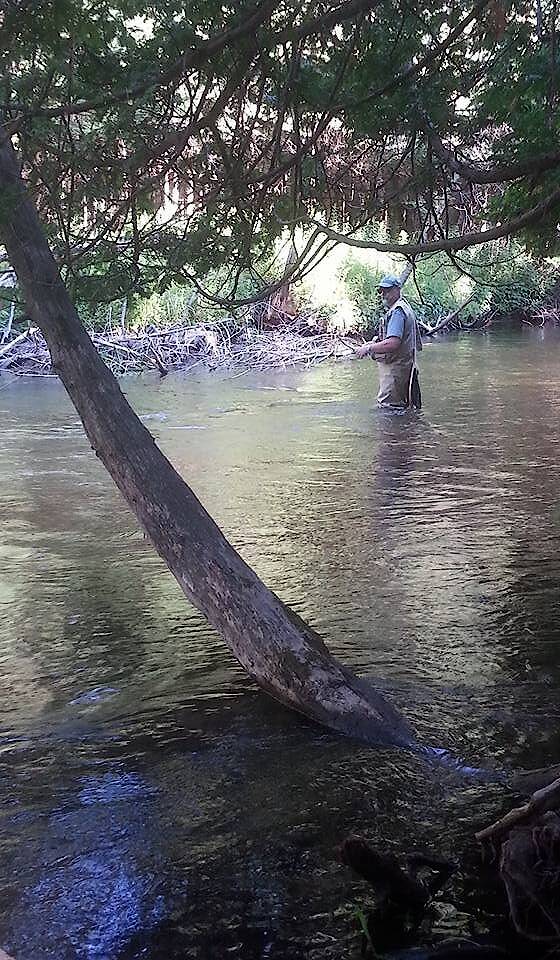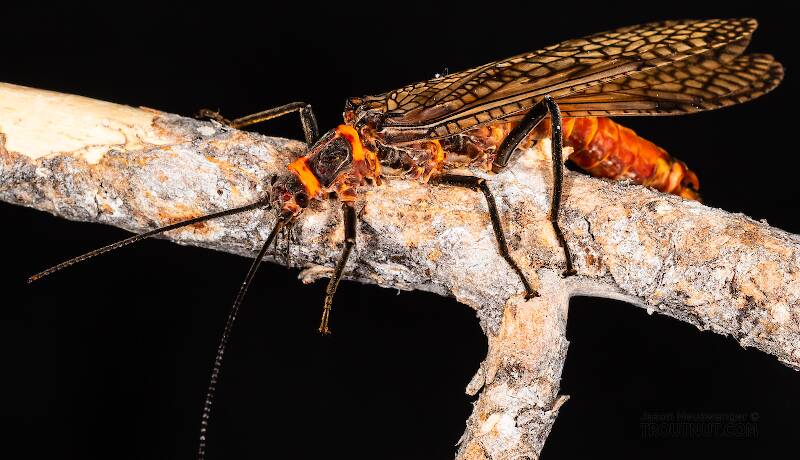
Salmonflies
Pteronarcys californica
The giant Salmonflies of the Western mountains are legendary for their proclivity to elicit consistent dry-fly action and ferocious strikes.
Featured on the forum
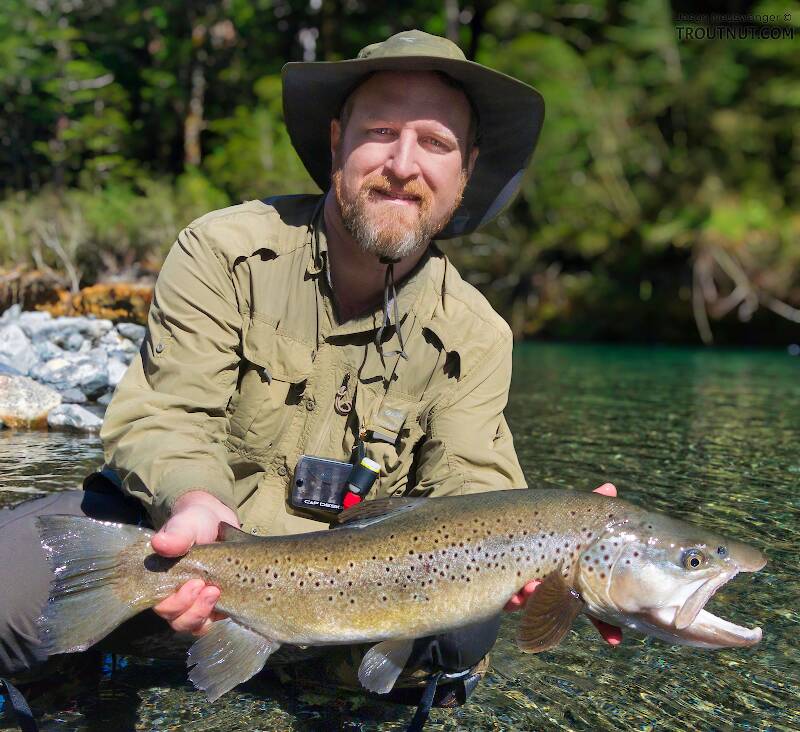
Troutnut is a project started in 2003 by salmonid ecologist Jason "Troutnut" Neuswanger to help anglers and
fly tyers unabashedly embrace the entomological side of the sport. Learn more about Troutnut or
support the project for an enhanced experience here.
Wbranch on Dec 8, 2013December 8th, 2013, 2:32 am EST
I'm not sure which member posted this comment;
"The statement that "a vital part of fly fishing is fly casting" is not even debatable. One would expect to see on the streams, lakes, and ponds, casters in approximate numbers who are good, bad, and indifferent; but amazingly there are mighty few of each of the two extremes and a vast army of the mediocre. It must be that Mr.Average Angler is so involved with habits, environment, approach and equipment that he postpones the day when he makes a science out of delivery."
This is a great comment! Today, and at least for the past two decades, there has been so much written about how important your leader is and how you must be using this, or that, fluocarbon tippet and how you should be using a super duper large arbor reel with a cork/teflon disc drag holding 200 yards of 20# backing. Then you can get all wrapped up in the choice of your fly line. Should it be a DT, or maybe a WF, or should it be a WF sink tip? Or maybe a shooting head, how about a finesee line for clear and low water? how about one of those pebbly finish lines maybe that is what you should be buying?
When I look the the tackle catalogs today I just can't believe how many fly lines are being offered!! When I started to fly fish, Yea, I know I'm a frigging dinosaur! there were just four lines being sold; a floating DT, a floating WF, a full sinker, and if you looked around you might even find what they called a "Bug" taper for heavy and air resistant flies. Heck when I started to fly fish the numerical system of defining line weights had not even been created yet. Lines were listed as GBF, HCH, etc and the letters defined the weights of the lnes.
Back in the early 1960's there were basically four fly reels to choose from; the Plueger Medalist series, the Martin fly reels, those goofy automatic reels that weighed about 10 ounces, and if you happened to be well heeled, or saved some money, you could buy one of the Hardy Lightweight series of reels. That was it! No large arbor reels, no billet CNC machined 6061 aluminum machined to tolerances of +/- .001".
My point to this long winded post is that when you only had a modest selection of tackle to chose from you could put in a huge effort to learn to cast well. You didn't have to worry if you had the newest zinger and gadget hanging from your vest because the streams and rivers had so many fewer anglers than they do today.
I remember reading Joe Brooks' book "Trout" and it had black line drawings of guys casting and explaining the mechanics of casting and where your arm should be and what happened when you dropped your arm back past the point where you could maintain line speed. I read it and re-read it many times and when spring came I was so excited to get out on the lawn to try it. I was young kid of 14 years old and was far more interested in learning to fly fish than I was in learning about girls (I did that later in excess) LOL.
I made many mistakes and it took me a long time to get even one good cast. I think lawn casting is very good for novices to get the feel of the rod and the fundementals of line management. Of course you can't begin to be adept at line management until you are in the water. But I could get into my backyard far more often than I could get to the water. I remember turning my head around to see where the line was and what a good loop looked like compared to one that was going to collapse.
Little by little I got better and when I was able to get on the water (my Dad had to drive me to a river and come back for me later) I was able to put those lawn sessions into use on the water and you can see how the fly line reacts when you have the surface tension of the water entering the equation of casting. I don't remember how long it took me to be able to go out and not look like a goofus but I know that by the time I was 17 years old my casting was at least as good as the old timers I was fishing with on the little New Jersey streams we were fishing.
If you are just getting into fly fishing don't think about all the limitless number of fly rods that are on the market, or the dozens and dozens of fly reels, or the specialty fly lines available. Find a local fly shop, not a big box store or even a Gander Mountain or Cabela's because those guys just work there and either aren't allowed to be spending too much time with a customer or they don't know how to cast themselves. A local fly shop might be offering casting lessons and the shop owner can surely help you in the correct selection of fly rod, reel, line, and terminal tackle for the waters you are planning to fish. Then go out there and practice over and over until you are good enough to hit a 12" target at 30 feet with just two false casts. You will feel elated!
"The statement that "a vital part of fly fishing is fly casting" is not even debatable. One would expect to see on the streams, lakes, and ponds, casters in approximate numbers who are good, bad, and indifferent; but amazingly there are mighty few of each of the two extremes and a vast army of the mediocre. It must be that Mr.Average Angler is so involved with habits, environment, approach and equipment that he postpones the day when he makes a science out of delivery."
This is a great comment! Today, and at least for the past two decades, there has been so much written about how important your leader is and how you must be using this, or that, fluocarbon tippet and how you should be using a super duper large arbor reel with a cork/teflon disc drag holding 200 yards of 20# backing. Then you can get all wrapped up in the choice of your fly line. Should it be a DT, or maybe a WF, or should it be a WF sink tip? Or maybe a shooting head, how about a finesee line for clear and low water? how about one of those pebbly finish lines maybe that is what you should be buying?
When I look the the tackle catalogs today I just can't believe how many fly lines are being offered!! When I started to fly fish, Yea, I know I'm a frigging dinosaur! there were just four lines being sold; a floating DT, a floating WF, a full sinker, and if you looked around you might even find what they called a "Bug" taper for heavy and air resistant flies. Heck when I started to fly fish the numerical system of defining line weights had not even been created yet. Lines were listed as GBF, HCH, etc and the letters defined the weights of the lnes.
Back in the early 1960's there were basically four fly reels to choose from; the Plueger Medalist series, the Martin fly reels, those goofy automatic reels that weighed about 10 ounces, and if you happened to be well heeled, or saved some money, you could buy one of the Hardy Lightweight series of reels. That was it! No large arbor reels, no billet CNC machined 6061 aluminum machined to tolerances of +/- .001".
My point to this long winded post is that when you only had a modest selection of tackle to chose from you could put in a huge effort to learn to cast well. You didn't have to worry if you had the newest zinger and gadget hanging from your vest because the streams and rivers had so many fewer anglers than they do today.
I remember reading Joe Brooks' book "Trout" and it had black line drawings of guys casting and explaining the mechanics of casting and where your arm should be and what happened when you dropped your arm back past the point where you could maintain line speed. I read it and re-read it many times and when spring came I was so excited to get out on the lawn to try it. I was young kid of 14 years old and was far more interested in learning to fly fish than I was in learning about girls (I did that later in excess) LOL.
I made many mistakes and it took me a long time to get even one good cast. I think lawn casting is very good for novices to get the feel of the rod and the fundementals of line management. Of course you can't begin to be adept at line management until you are in the water. But I could get into my backyard far more often than I could get to the water. I remember turning my head around to see where the line was and what a good loop looked like compared to one that was going to collapse.
Little by little I got better and when I was able to get on the water (my Dad had to drive me to a river and come back for me later) I was able to put those lawn sessions into use on the water and you can see how the fly line reacts when you have the surface tension of the water entering the equation of casting. I don't remember how long it took me to be able to go out and not look like a goofus but I know that by the time I was 17 years old my casting was at least as good as the old timers I was fishing with on the little New Jersey streams we were fishing.
If you are just getting into fly fishing don't think about all the limitless number of fly rods that are on the market, or the dozens and dozens of fly reels, or the specialty fly lines available. Find a local fly shop, not a big box store or even a Gander Mountain or Cabela's because those guys just work there and either aren't allowed to be spending too much time with a customer or they don't know how to cast themselves. A local fly shop might be offering casting lessons and the shop owner can surely help you in the correct selection of fly rod, reel, line, and terminal tackle for the waters you are planning to fish. Then go out there and practice over and over until you are good enough to hit a 12" target at 30 feet with just two false casts. You will feel elated!
Catskill fly fisher for fifty-five years.
Oldredbarn on Dec 8, 2013December 8th, 2013, 5:41 pm EST
Great advice Matt. I think the experience you've acquired over a lifetime of fly fishing can help us cut through some of the noise and focus on the important stuff.
Thanks!
Spence
Thanks!
Spence
"Even when my best efforts fail it's a satisfying challenge, and that, after all, is the essence of fly fishing." -Chauncy Lively
"Envy not the man who lives beside the river, but the man the river flows through." Joseph T Heywood
"Envy not the man who lives beside the river, but the man the river flows through." Joseph T Heywood
TNEAL on Dec 12, 2013December 12th, 2013, 10:06 am EST
Great advice! I especially like the "those guys just work there..... or don't know how to cast themselves..." Get some local advice; talk to the people involved and get a feel for them. Proper advice will save you huge amounts of time learning to cast well.
Tight loops,
Tim
Tight loops,
Tim
Oldredbarn on Dec 17, 2013December 17th, 2013, 12:13 pm EST
Hey Mr. Neal...Happy Holiday's, sir! Saw your old running buddy here a few weeks back up at the FFF Tying Expo in Holt. He was holding court as usual...:) He has an old lure sitting on his tying bench with two treble hooks hanging from it, he has tied a parachute, post and hackle to it...:) A little boy walked past with his father and Jerry tied him up a Hopper to take home with him...He was a little guy...Kindergarden or so...He kept pointing to the lure and he told Jerry he liked that one. :)
Funny!
Spence
Funny!
Spence
"Even when my best efforts fail it's a satisfying challenge, and that, after all, is the essence of fly fishing." -Chauncy Lively
"Envy not the man who lives beside the river, but the man the river flows through." Joseph T Heywood
"Envy not the man who lives beside the river, but the man the river flows through." Joseph T Heywood
TroutBums on Oct 9, 2014October 9th, 2014, 10:01 am EDT
Stokes, I have found Orvis has some great videos on casting, rod lengths and line to use. Video makes it much easier to follow and can give some good advice on what to try and with what.
As you can see there are lots of suggestions...like several said, it is a crap shoot on the right answer. Technique and style are accomplished with practice and will also answer your questions through experience.
As you can see there are lots of suggestions...like several said, it is a crap shoot on the right answer. Technique and style are accomplished with practice and will also answer your questions through experience.
Stokes on Oct 13, 2014October 13th, 2014, 2:52 pm EDT
As long as someone dug up this old thread I thought I'd leave an update.I found the secret to learning good casting...spend 2 to 3 days a week on the streams and catch no fish.I got a fairly early start this season and caught just 3 fish from early May till just last week.So I had 2 to 3 casting sessions per week,6 to 8hrs per day.I tell you I am now a casting machine.Gave up on looking for distance,but I can get about 60ft casts with my 4wt Access rod and 30 to 40ft with my 6ft 2wt.Can hit a trout in the head,if I can just find one.I did have a good day last week,I caught 2 decent rainbows and lost a lunker after I thought I had set the hook well,had that 4wt rod bent in half for a while and then spit the fly at me when I got him to about 25ft from landing.Also missed setting the hook on 8 takers and saw at least a dozen fish rising throughout the afternoon.I was fishing a stretch below the portal on the Esopus.I normally fish the smaller stretch above the portal and some of the smaller tribs,but the water is very low this time of year so I went to the larger waters below the portal.I'll be back there tomorrow,probably be my last outing this year.
PaulRoberts on Oct 13, 2014October 13th, 2014, 3:54 pm EDT
Sounds like some wonderful times, Carl. Fly fishing is wonderful, even when we're not catching. It's just nice to cast on moving water.
Stokes on Oct 13, 2014October 13th, 2014, 6:25 pm EDT
To tell the truth Paul,I did start to get frustrated by mid Sept.Back in May I got one stocked brown in a local (Dutchess County)stream and saw nothing till the end of August when I got 2 small brookies on the upper West Kill.All season I saw nothing,no fish,no bugs,a few,but no major hatches.I did early morning to mid afternoon or early afternoon till dark,2 to 3 times a week.I like the small streams,the upper Esopus,a couple of its tribs,the West Kill and the Schoharie Creek.We had a couple of bad flood conditions over the last couple years and I really think they had a bad effect on the smaller streams fish populations,especially the West Kill.With all the hours I spent out there,you would think I'd see something,even just by dumb luck.But not a thing.I didnt fish my lake at all this summer,went out for an evening the last week of Sept and boated 3 nice rasinbows in under an hour with an UL spinning rod and wonderd why I was driving 75 miles to the Catskills to get skunked,and then last Monday I went for what I thought would be my last trip to fly fish this year,and maybe forever.But now the magic is back.Wasnt a monumental outing by any means,but I saw more fish,had more hits,landed 2 and lost a fairly large fish,so comparatively it was a grand outing for me.Going back tomorrow and if things are even close to my last outing will go a few more times this season.
PaulRoberts on Oct 14, 2014October 14th, 2014, 8:26 pm EDT
Good luck with it.
You might want to check with the DEC on other streams. There's bound to be some good fishing near you.
You might want to check with the DEC on other streams. There's bound to be some good fishing near you.
Cardealer12 on Nov 19, 2014November 19th, 2014, 11:20 am EST
Good luck with it.
You might want to check with the DEC on other streams. There's bound to be some good fishing near you.
DEC is a pretty decent spot to go.
Wbranch on Nov 19, 2014November 19th, 2014, 3:31 pm EST
It appears Cardealer12 just wants to provide a blatant self serving appeal to visit his web site.
Catskill fly fisher for fifty-five years.
Roguerat on Nov 20, 2014November 20th, 2014, 10:39 am EST
I've read in more than one casting primer 'don't practice on the water'...which I've pretty much ignored. Like Carl (Stokes) I find that if the trout aren't hitting then I may as well spend some time on technique. Casting the clock, hitting the same area of water repeatedly, roll-casting, and especially mending (my sore spot)- it all adds up to better presentation when I'm on the water and things are really happening.
Winter hit W MI fairly hard the past week, 24" of snow and more to come- nothing compared to Buffalo NY, though. 6 feet!?
Matt, have you ever posted any pictures of an Emerald Shiner Steelhead streamer? I've Googled this and come up with a lot of stuff, but with variations- must be personal preferences or maybe a regional thing.
Roguerat
I Peter 5:7 'Cast your cares upon Him...'
Winter hit W MI fairly hard the past week, 24" of snow and more to come- nothing compared to Buffalo NY, though. 6 feet!?
Matt, have you ever posted any pictures of an Emerald Shiner Steelhead streamer? I've Googled this and come up with a lot of stuff, but with variations- must be personal preferences or maybe a regional thing.
Roguerat
I Peter 5:7 'Cast your cares upon Him...'
Wbranch on Nov 20, 2014November 20th, 2014, 12:45 pm EST
Don't know how to post a link you can open but you can cut and paste this one. It is the fly we use, very effectively, on the Erie creeks. We fish it unweighted to sighted steelhead and with a couple of BB's when swinging it blind.
http://www.defranksflies.com/wp-content/uploads/2012/05/defranks_emerald_shiner_hyper-300x300.jpg
Here is the recipe;
Pattern Recipe
Hook: Daiichi 1530 #8-10
Thread: 8/0 Olive Dun Uni Thread
Wings 1 & 3: Pearl Ice Dub
Wing 2: Silver Gray Ice Dub
Wing 4: Olive Finn Raccoon
Eyes: 3/32 Prismatic Eyes
Fly Head: Liquid Fusion (available at Michael's Craft stores - cures faster than two part epoxy and doesn't pool as much either)
My friend ties this fly with much lighter color gray Ice Dub than shown in the picture. I think his fly looks more lifelike. PM me your email address and I'll try and send you a picture of it. I have problems posting pictures directly to a Troutnut post.
http://www.defranksflies.com/wp-content/uploads/2012/05/defranks_emerald_shiner_hyper-300x300.jpg
Here is the recipe;
Pattern Recipe
Hook: Daiichi 1530 #8-10
Thread: 8/0 Olive Dun Uni Thread
Wings 1 & 3: Pearl Ice Dub
Wing 2: Silver Gray Ice Dub
Wing 4: Olive Finn Raccoon
Eyes: 3/32 Prismatic Eyes
Fly Head: Liquid Fusion (available at Michael's Craft stores - cures faster than two part epoxy and doesn't pool as much either)
My friend ties this fly with much lighter color gray Ice Dub than shown in the picture. I think his fly looks more lifelike. PM me your email address and I'll try and send you a picture of it. I have problems posting pictures directly to a Troutnut post.
Catskill fly fisher for fifty-five years.
Quick Reply
Related Discussions
Topic
Replies
Last Reply
2
Jul 5, 2009
by Pdq5oh
by Pdq5oh

